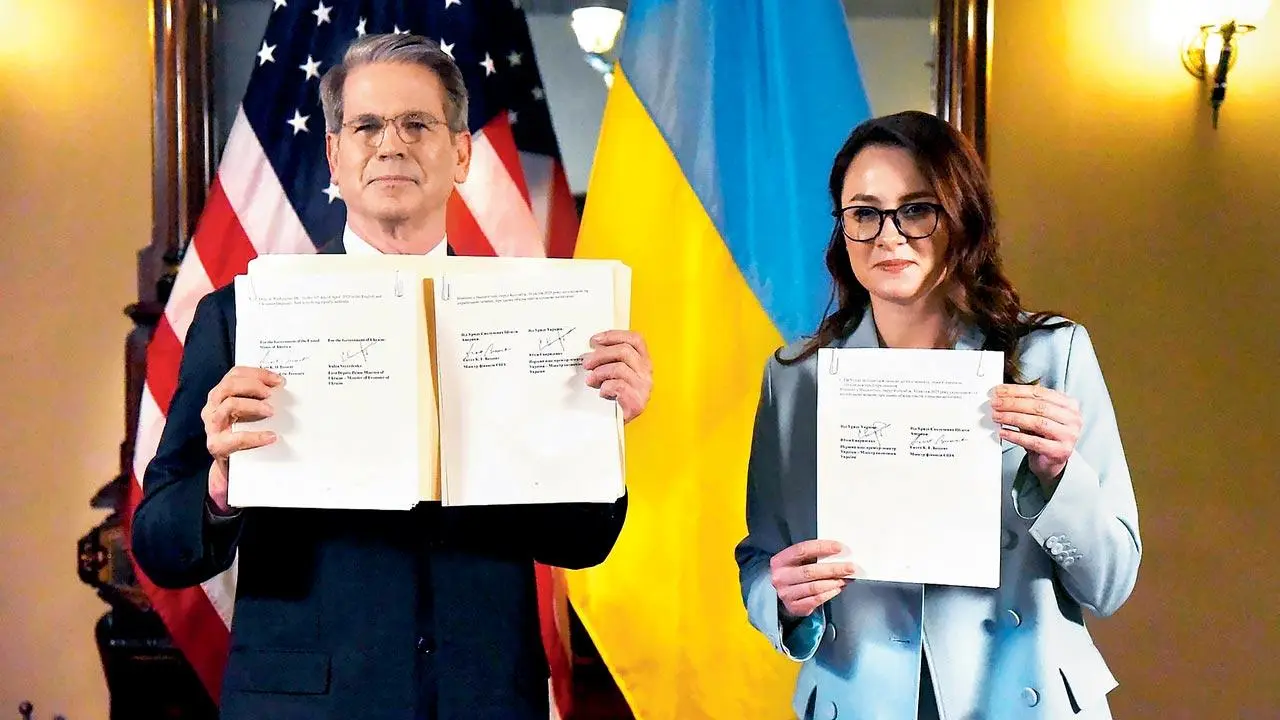Washington can also make its contribution in the form of new military aid, although it will be down to the US president to decide whether or not to do that

(From left) US Treasury Secretary Scott Bessent and Ukraine’s Deputy Prime Minister Yulia Svyrydenko pose after signing the minerals deal in Washington DC. Pic/AFP
The US and Ukraine have finally signed a long-awaited agreement on Ukraine’s post-war reconstruction, and at first reading, the details appear more favourable for Kyiv than many observers expected.
At the core of the “economic partnership agreement” is the exploitation of Ukraine’s mineral wealth. Ukraine will get access to US investment and technology, and the US will eventually get a share of the profits. The rest will finance the war-torn nation’s recovery if and when a peace agreement is signed with Russia.
Several aspects of this deal stand out as positive for Ukraine. Unlike in previous drafts, the country retains ownership of its natural resources. All profits are to be invested in Ukraine for ten years after the agreement comes into force.
Washington can also make its contribution in the form of new military aid, although it will be down to the US president to decide whether or not to do that.
Earlier in the negotiations, a major sticking point was the demand from the US president, Donald Trump, that the agreement include compensation for past US aid to Ukraine, which he insisted amounted to $350 billion (£260 billion). Many analysts estimate the figure is closer to $120 billion.
This story has been sourced from a third party syndicated feed, agencies. Mid-day accepts no responsibility or liability for its dependability, trustworthiness, reliability and data of the text. Mid-day management/mid-day.com reserves the sole right to alter, delete or remove (without notice) the content in its absolute discretion for any reason whatsoever
 Subscribe today by clicking the link and stay updated with the latest news!" Click here!
Subscribe today by clicking the link and stay updated with the latest news!" Click here!








